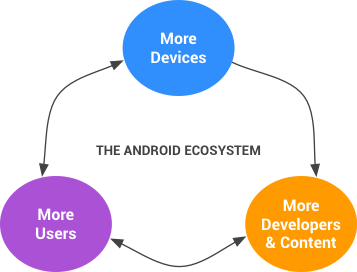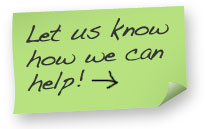
Good marketers are religious about “Whole Products” and “Ecosystems.” Ecosystems usually complete “Whole Products,” but they can also invent new products. Here’s how.
Whole Products and Ecosystems
“Whole Product” means “everything your customer needs to get their job done.”  This is also the “Viable” in “Minimum Viable Product.” No matter how exciting your features, if miss the one thing critical to actually getting a job done, you don’t have a whole product … you don’t have a viable product. And you frustrate customers.
This is also the “Viable” in “Minimum Viable Product.” No matter how exciting your features, if miss the one thing critical to actually getting a job done, you don’t have a whole product … you don’t have a viable product. And you frustrate customers.
Ecosystems include other companies who help you deliver a Whole Product when don’t want to do it yourself  — service providers, resellers, feature extensions…. Getting other companies to do what you need isn’t easy. But it can be a whole lot easier than doing everything yourself. The tech kings of multi-company ecosystems are Google and Microsoft. The kings of delivering a whole product alone are Apple and, well, Apple.
— service providers, resellers, feature extensions…. Getting other companies to do what you need isn’t easy. But it can be a whole lot easier than doing everything yourself. The tech kings of multi-company ecosystems are Google and Microsoft. The kings of delivering a whole product alone are Apple and, well, Apple.
You Need a Whole Product to Make a Whole Dinner
Now consider the fad of Pop-Up Restaurants — hip restaurants like BLUD (such a great name) or Steph Curry’s wife Ayesha’s International Smoke. Pop-ups are led by a hot chef, open for a few months (or whenever social media puts out the word), and delight customers who discover them.
Working a pop-up is rarely a full time job. Not for the chef … the servers … the kitchen staff. But they can be a win/win for everyone. Often the Pop-Up is in a temporarily unused space with a kitchen, so landlords win by keeping rent low, but still making something. The chef and staff win because they move fast with no need for deep-pockets to bankroll an expensive commercial kitchen or a long lease. Customers win with an inherently exclusive experience. Risk is low. Excitement is high. Profits can be considerable.
A restaurateur discussing Pop-Ups with me said,
“What about staff? It can take weeks to get new restaurant staff trained. A pop-up can’t have two months of growing pains. And how do you get the best employees when there’s no job security?”
It’s easy to shrug this off. Won’t the best servers and sous-chefs jump at the chance to work with a hot chef for a couple of months? Maybe. Maybe not. Either way, if your pop-up fills via word of mouth and “hot stuff of the week” press, you can’t leave great service to chance.
Who Gets to Own the Ecosystem?
Let’s rethink the Pop-up Restaurant service challenge with “Whole Product” and “Ecosystem” thinking. A pop-up needs four things:
- Chef
- Location
- Service Team
- Promotion
Today, the chef almost always starts the process. But is that a law?
A smart business owner I know runs one of the top restaurant staffing companies in the country. His business connects him with hungry real-estate brokers and restaurant landlords. And freelance marketers — especially social media savvy promoters — are often better than in-house players. So a staffing specialist can turn the ecosystem on its head: start with service instead of chef. Package skilled servers and locations to offer a turnkey opportunity to a chef. Instant Whole Product. Instant Pop-up and the chef doesn’t need quite so much on her plate.
The tail wags the dog. And everyone is pretty doggone happy about it.
Takeaways
- If you’re waiting around at the end of a decision process, start controlling your destiny. How can you change your business model to make things happen instead of waiting?
- Before you leap, you’ve got to know your customers. What do they want, need, crave?
- Once your clear on the Whole Product pieces, can you reinvent how they go together by rethinking your Ecosystem?



